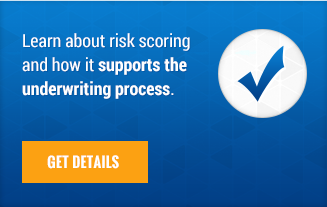Other than the population of number-crunchers concentrated in lower Manhattan, (a.k.a the stock market), there is no other industry more enamored with — and dependent upon — huge amounts of data than insurance. To run their day-to-day businesses, insurers of all kinds depend upon everything from 100-year-old archives of policies and claims, to predictive analytics producing data for events that haven’t actually happened.
Specifically, property insurers (as well as brokers and reinsurers) depend on natural catastrophe models, maps, building plans, and industrial machinery profiles, along with their own claims and policy data. The reason everyone needs to use so many datasets is that no single dataset is satisfactory, let alone comprehensive, for predicting the future (which is what every insurer is essentially trying to do every hour of every day).
An important key to unlocking the full richness of datasets is risk scoring — an analytic that tries to replicate, as much as possible, the thought process of an experienced mind that is served with rich datasets. Risk scoring can take any of the following forms:
- simple risk assessments (e.g., assign a risk value to a point in this flood zone)
- rating or pricing (e.g., charge this much based on this risk zone and these building attributes)
- filtering (e.g., write these risks, reject those risks)
- assigning specific locations to specific underwriting/broking teams (e.g., give risks like this to those guys, and risks like that to these guys)
Risk scoring is a fundamental analytic that should be used by everyone in the insurance industry. Based on my conversations over the past few years, however, the potential for scoring is not fully realized. To help remedy that, here are four major benefits of risk scoring.

1. Standardization of data leads to more certainty.
The principle strength of risk scoring is that it can standardize a sophisticated group of disparate datasets. For example: Flood risk scores are basically comprised of a flood zone and a flood depth, with the score being determined by a matrix of values. But a more comprehensive flood risk score could take into account multiple flood zones, different perils, and completely different types of data — like elevation and water locations. With more types and sources of data used, results don’t necessarily become more correct, but they do become more certain (uncertainty is expensive!), and they become easier to work with.
2. Streamlining workflows allows for training and expansion.
Underwriting, and the business rules around it, heavily depends on experience. Unfortunately, new underwriters can’t leverage experience in their day-to-day activities. Risk scoring can replicate experience, though, in a way that can be used by inexperienced underwriters. Experience is applied to risk submissions as a series of qualifications of the risk, such as: “I always apply these terms on this side of that city; I can write primary flood on this side of that road because it’s raised and protects the property; I only write wildfire coverage if it’s within a certain distance of a water source AND a paved road; etc.” These gut feelings and hunches can be recreated by a risk scoring system, provided the necessary underlying data is available. Once new underwriters can use risk scores, training becomes easier and the business can expand beyond the limits of experience and experienced people.
3. Simplification of complex answers yields more valuable information.
Scoring also offers the opportunity to simplify complex datasets in a way that enables other analytics to leverage them. Claims history is a fundamental dataset for every insurer, but it is a complex set of information. With geospatial analytics and scoring, a claims database can be converted to what is basically a map, where the individual claims can be weighted based on attributes such as their age, their loss amount, and their relative location to other claims. By combining scores into other scoring algorithms, more value can be realized from these enormous and complex sets of data.
4. Communication around risk becomes faster and easier.
Once risk is expressed as a risk score, and a wide range of people can easily leverage complex and varied datasets, it becomes very easy to discuss risks. The advantage of this is clear within an organization: “Send all the 5s to the specialty team.” Likewise, these advantages are available to a small group of companies — such as a carrier and the brokers it works with — if they can agree on and define a dependable, standard, and transparent set of risk scores. For example: If a portfolio of properties is submitted to a carrier for a quote with a risk score assigned to each location, the carrier can easily process the request. (Maybe 1s, 2s, and 3s are written based on specified rules; 4s are reviewed; and 5s are sent to another division or carrier for the quote.) Conveying the necessary information becomes simple, and even the underlying data remains obscured (if required), allowing the carrier to offer the quote much faster.
The Bottom Line
With risk scoring, no data is too complex or disparate to be used in fundamental decisions. Insurance underwriting is an art that becomes more scientific — and thus tighter — as more input information is able to be easily applied to the decision making process. Broking and placing becomes easier because the scores drive the application of business rules; experience is harnessed and shared; and more value is realized from underlying data.

